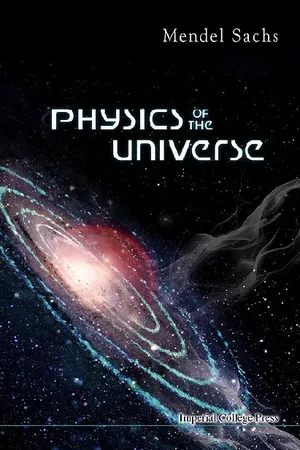Physics Of The Universe
About this book
This book presents a new approach to the subject of cosmology. It fully exploits Einstein's theory of general relativity. It is found that the most general formal expression of the theory replaces the (10-component) tensor formalism with a (16-component) quaternion formalism. This leads to a unified field theory, where one field incorporates gravitation and electromagnetism. The theory predicts an oscillating universe cosmology with a spiral configuration. Dark matter is explained in terms of a sea of particle-antiparticle pairs, each in a particular (derived) ground state. This leads to an explanation for the separation between matter and antimatter in the universe. There is a brief discussion of black holes and pulsars. The final chapter delves into philosophical considerations such as the different types of 'truth', positivism versus realism and a discussion of the role of the Mach principle in physics and cosmology.
Frequently asked questions
- Essential is ideal for learners and professionals who enjoy exploring a wide range of subjects. Access the Essential Library with 800,000+ trusted titles and best-sellers across business, personal growth, and the humanities. Includes unlimited reading time and Standard Read Aloud voice.
- Complete: Perfect for advanced learners and researchers needing full, unrestricted access. Unlock 1.4M+ books across hundreds of subjects, including academic and specialized titles. The Complete Plan also includes advanced features like Premium Read Aloud and Research Assistant.
Please note we cannot support devices running on iOS 13 and Android 7 or earlier. Learn more about using the app.
Information
Table of contents
- Contents
- Preface
- Acknowledgements
- Chapter 1. Physics of the Universe
- Chapter 2. A Language of Cosmology: The Mathematical Basis of General Relativity
- Chapter 3. A Unified Field Theory in General Relativity: Extension from the Tensor to the Quaternion Language
- Chapter 4. An Oscillating, Spiral Universe Cosmology
- Chapter 5. Dark Matter
- Chapter 6. Concluding Remarks
- Chapter 7. Philosophical Considerations
- References and Notes
- Postscript
- Physics in the 21st Century
- Holism
- The Universe
- The Mach Principle and the Origin of Inertia from General Relativity
- Index
